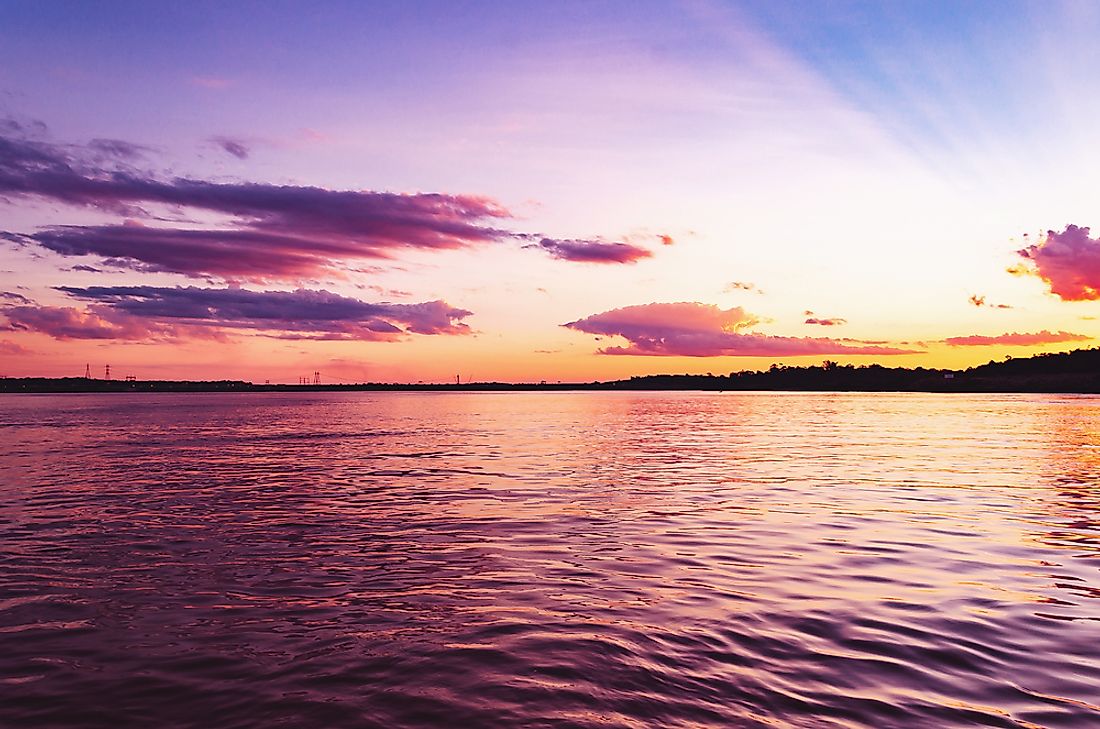The Madeira River

5. Description
The Madeira River traces along for a distance of 2,100 miles through Brazil and Bolivia, making it one of the major rivers of South America. It is one of the Amazon River's major tributaries, and one of its biggest waterways. Its former name was the Cuyari River, though the Portuguese called it "Madeira", which means "Wood River". The Madre de Dios River and Mamore River merge to form the Madeira. During the wet season, this river floods to 50 feet in height, inundating the forests on its flanks. Its climate differs as it flows from one area to another, from more arid to more humid. The Madeira River flows into the lower plains and downstream into the Abuna River.
4. Historical Role
The women of the Amazon were referred to by the nation of the Topinambes as having lived in the Madeira areas of the Amazon jungles. Even the Spanish conquistadors who met these women, at least as described by them in their journals, compared them to the Hellenistic Amazonian women warriors of mythology as well. The same Topinambe Indians of the Amazon also used the Madeira River as a traditional waterway. The river was also an important source of fish, and its forests gave much wood from its trees to build new fleets for the Spaniards and the Portuguese following their respective arrivals. Gold, silver, and tobacco were among the precious cargo that went down the Madeira's waterways and, ultimately, into markets of the Old World.
3. Modern Significance
As the biggest tributary of the Amazon River, the Madeira River contributes to the area's economy significantly. The port of Velho is a conduit to many other Brazilian cities for trade and supply. The river basin's biodiversity includes about 900 fish species living in its many marine habitats. The Madeira River's water flow accounts for around 15% of the total volume of water that flows into the Amazon River, which in turn flows out into the Atlantic Ocean. The areas where the Madeira flows are populated by indigenous tribes of people who continue to fish and farm in a traditional manner as a way of making a living. In short, the Madeira sustains not only flora and fauna, but native and modern communities that depend on its waters for their ways of life alike.
2. Habitat
The Andes Mountains produces river flows that are tumultuous, and these are carrying heavy sediments that turn the river water into a whitewater body as it enters the Madeira River. The Madeira carries a whitewater flow that is home to a varied fish population. However, the Amazon has many habitats dictated by its different tributaries that in turn contribute to its own water types, such as black-waters, whitewater, and sandy waters. Crabs, fish, turtles, algae, dolphins, manatees, and anacondas all make the Madeira River part of their home ranges as they travel through the larger Amazon River systems. The Madeira has seven river tributaries and six major cities on its banks. The reservoir of the Santo Antonio Dam has submerged two waterfalls in the area.
1. Threats and Disputes
Modern Brazilian society and its need for power has posed a threat to the ecosystems in many of its rivers, including the Madeira. The building of dams in its rivers has affected the fish and indigenous communities that used to thrive there before the dams were constructed. The Madeira River is no exemption, and its biodiversity has surely been affected as well. The two hydroelectric complex dam projects that are being built on the Madeira are the San Antonio and Jirau Dams. These will stop the free flow of the river once the dams start their respective operations. Fish migrations, which are part of many fish species' life-cycles in the Madeira, will be altered, and run-offs lade with nutrients from high up in the Andes that nourished the river's waters will no longer reach their intended courses.











